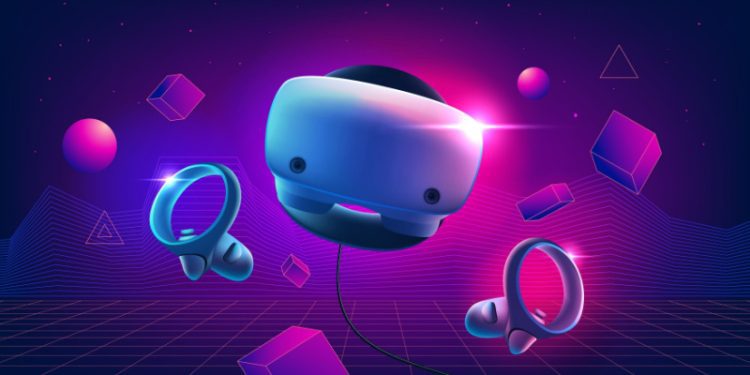The gaming industry thrives on innovation, as developers continually explore new methods to create immersive experiences. Recently, a significant development has started to transform game design: the use of artificial intelligence. More developers and creative teams are using AI for game development, particularly for generating characters and props. This change goes beyond saving time or money; it opens new avenues for creativity, accessibility, and scalability.
There has been a significant increase in the demand for games featuring intricate details. Players expect expansive worlds, detailed characters, and realistic props that boost immersion. Traditionally, this required extensive teams of artists, modellers, and designers working for months or years. AI in game development can streamline workloads, enabling creators to enhance productivity and creativity.
Accelerating Creativity
The rise of AI in game development is primarily due to efficiency. Traditionally, character modelling and prop design required meticulous manual work, with every texture and shape created by hand. AI tools can generate various assets quickly. Designers can submit rough sketches, prompts, or parameters and quickly receive complete models or concepts.
This acceleration enhances, rather than eliminates, human creativity. Artists can swiftly investigate various design paths, hone them, and concentrate their efforts on creative choices instead of monotonous tasks. AI for game development acts as an assistant, allowing developers to experiment freely without the constraints of long production cycles.
Improving Detail and Realism
Today’s players seek authenticity, even in imaginative worlds. AI systems are proficient in creating textures, materials, and details that appear realistic and uniform. AI in game development analyses extensive imagery and patterns to create detailed, lifelike environments and props. This results in more detailed facial expressions, realistic hair, and clothing that drapes naturally. Props are items that seem to fit within the world, like a mediaeval sword or a futuristic gadget.
AI enhances detail and maintains consistency across various assets. In extensive projects with various designers, achieving a cohesive aesthetic can be difficult. AI helps maintain stylistic consistency across assets, ensuring a unified visual language.
Strengthening Smaller Teams
More people are turning to AI for game development due to its accessibility. High-quality characters and props were once exclusive to large studios with big budgets. Small teams or independent developers often didn’t have the resources to compete with industry giants. AI has equalised opportunities by cutting down the time and expenses linked to asset creation.
Smaller teams can now create games that match the detail and polish of larger projects. An individual designer can produce numerous distinct props or characters using AI, expanding creative possibilities in indie gaming. The democratisation of tools enables diverse voices in the gaming industry, resulting in a broader range of games for players.
Enhancing Creative Opportunities
AI in game development enhances efficiency and fosters creativity. Developers can investigate fresh character archetypes or prop designs that may have previously gone unnoticed. AI generates numerous variations on a theme, offering developers inspiration and surprising outcomes. These outputs can inspire ideas that human creators enhance, merging machine generation with human creativity.
A designer might provide AI with a general idea for a mythical creature. The system could generate various unique interpretations, some potentially challenging traditional design norms. The developer merges AI-generated ideas with their artistic vision to create something original. AI acts as a partner, not a substitute.
Enhancing Player Personalisation
Players are placing greater importance on personalisation in games, such as designing their own avatars or tailoring their surroundings. AI in game development enables developers to provide enhanced and more adaptive customisation options. Characters are generated automatically with distinct features, guaranteeing that every player has a unique appearance. Props can change in style or detail based on player choices, enhancing the feeling of ownership in a game.
Achieving this responsiveness manually is challenging, but AI allows for scalability. Developers can provide players with extensive variation without manually crafting every asset. It enhances player experience and boosts replayability and engagement.
Optimising Iteration and Testing
Game design is iterative, leading to assets undergoing several revision stages. AI in game development speeds up the creation of quick prototypes for characters and props. Designers can quickly evaluate various styles or mechanics in-game without investing significant time in manual construction.
A design that fails can be quickly replaced or modified, allowing for more experimentation with minimal resource expenditure. This rapid prototyping is especially important in early development stages, where adaptability is key.
Meeting Content Needs
As games grow larger and more ambitious, the demand for numerous assets increases. Open-world games need numerous unique props to build realistic environments. AI in game development provides a scalable approach, generating extensive item libraries with minimal manual effort.
AI’s capacity to fulfil content needs while easing the burden on human teams is crucial in today’s development landscape. Artists manage and enhance the outcomes, while AI handles the majority of production, meeting deadlines without compromising quality.
Harmonising Productivity and Human Ingenuity
Critics express concern that AI in game development could reduce the importance of human artists. Many in the industry have a different perspective. AI is viewed as a tool that alleviates repetitive tasks, enabling developers to concentrate on more advanced creativity. The human touch is essential for shaping the tone, style, and narrative of a game, while AI takes care of asset generation.
The true potential of AI is found in this balance. Developers achieve automation’s efficiency while preserving the unique insights and emotions of human creativity. Games from this collaboration can reach enhanced levels of quality and originality.
Characters and Props in Gaming: The Future
AI in game development is set to evolve further, providing increasingly advanced capabilities. Characters could become more realistic, as AI creates their looks, behaviours, and emotional responses. Props could interactively respond to player actions in new, dynamic ways.
AI could create new game design possibilities. Envision realms where every element, from objects to characters, is generated by smart systems, crafting experiences that are infinite and distinct for each player. Human oversight will always steer these creations, but the potential is vast and thrilling.
Summary
AI’s growing role in game development for character and prop creation highlights a significant change in the game-making process. Efficiency, realism, accessibility, and creativity drive its growing popularity. What used to need large teams and resources is now accessible to smaller studios and individual creators.
AI boosts artists’ capabilities, enabling them to concentrate on storytelling, design, and innovation. AI enables rapid asset generation and limitless variation, laying the groundwork for immersive, personalised, and expansive gaming experiences.
As technology advances, the collaboration between human creativity and artificial intelligence will strengthen, heralding a new era in game design. The integration of AI in game development represents an exciting evolution for developers and players in interactive entertainment.











